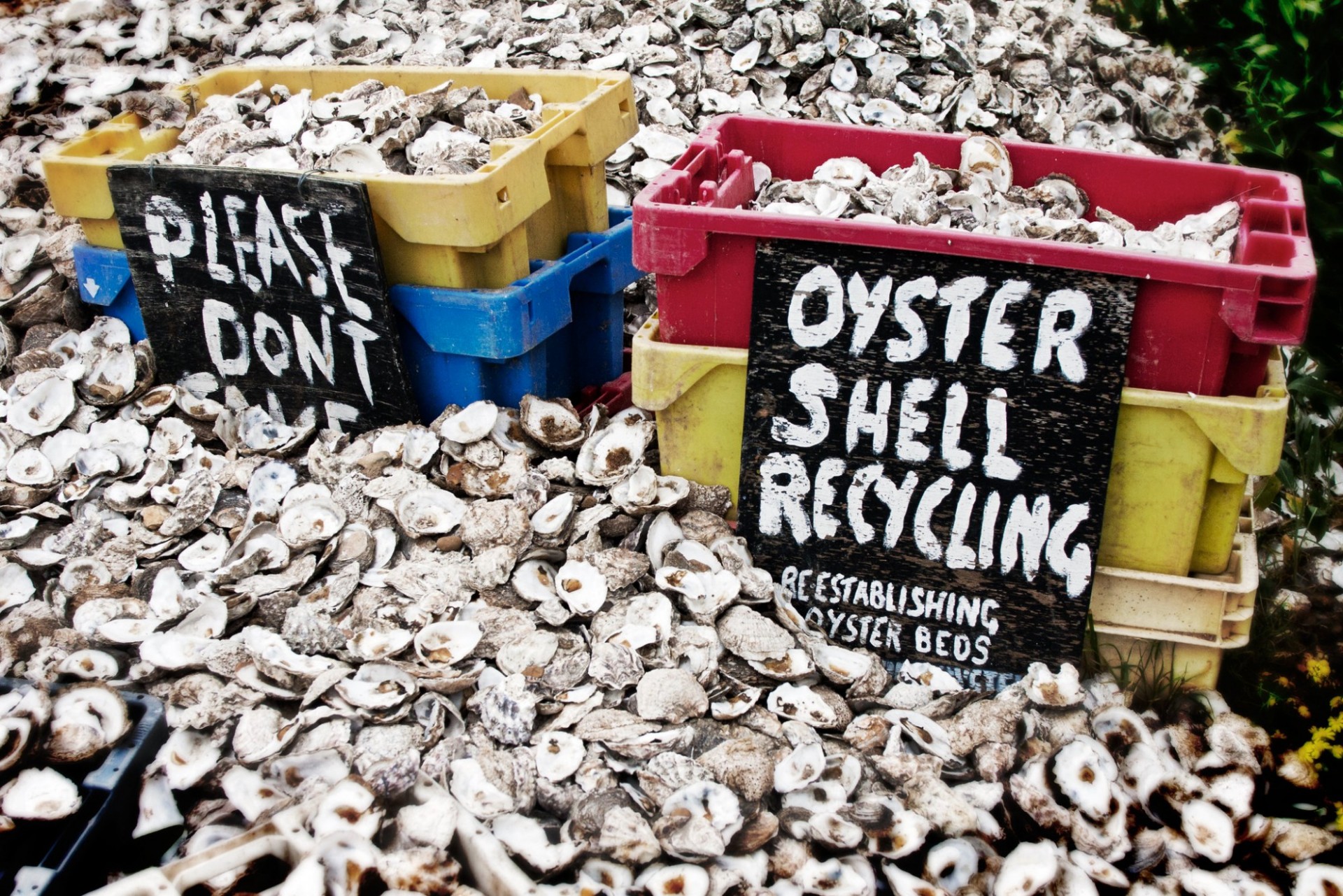Oysters Could Be a Solution for Our Sea Level Rise Woes
Oysters are ecological magicians. Aside from being a tasty feast for some, oysters provide a slew of ecological benefits to the waters in which they inhabit.

C+S 2021 students are blogging about topics that interest them for Applications in Climate and Society, a core spring class.
As oceans rise, coastal communities are turning to solutions like seawalls and floodgates for protection. But a natural solution could be sitting right on our dinner plates: oysters.
Currently, 250 million people worldwide are vulnerable to flood impacts from rising sea levels, and this number could increase to as many as 480 million by the end of the century. The economic damages associated with flooding from sea level rise could cost the world $14 trillion a year by 2100. With these threats in mind, many cities have started to turn to oysters for coastal protection. The idea is that human engineering and the adaptive biology of oysters can work together to create living shoreline features that provide a buffer to the impacts of rising tides as well as habitat for marine organisms and improve water quality.
Oysters as ecological magicians
Oysters are ecological magicians. Aside from being a tasty feast for some, oysters provide a slew of ecological benefits to the waters in which they inhabit. Healthy oyster reefs provide habitat for hundreds of marine organisms, make waterways cleaner (a single adult oyster can filter up to 50 gallons of water a day!), provide protection against coastal erosion by dissipating wave action, and bear the brunt of impacts from storm surge and sea level rise.
Despite their magic, oysters have been almost eliminated from their natural habitats around the world. Within the past 200 years, approximately 85% of global oyster reefs have been lost. Most of this has been the result of overharvesting, human development, pollution, and loss of wetland habitat.
Living defenses
In recent years, there have been heightened efforts to reintroduce oysters back into their native ecosystems. Restoration projects are now underway on four continents and at least seven countries. With sea level rise and persistent flooding as pervasive concerns, oyster reefs and living shoreline projects are emerging as potential solutions to these problems. Living shorelines involve the construction of reef-mimicking structures that harbor oysters, reduce coastal risk, and create and restore essential marine habitat.
In contrast to costly seawalls that must be maintained, repaired, and built progressively higher if they are to keep up with the rising tides, these walls of oysters are more resilient to storm damage, able to regrow and heal on their own, and can actually grow and expand to outpace sea level rise. Not only are oyster reefs living, filtering break walls, they can also move to accommodate changes in sea level and repair themselves along the way.
Living shoreline projects are currently underway along every U.S. coast, and the Defence Advanced Research Projects agency has even launched a “Reefence” initiative to research the ability of oyster reefs to provide protection for military coastal infrastructure threatened by sea level rise.
In New York City, my current home, the Billion Oyster Project is working to restore oysters to New York Harbor, which used to be home to 220,000 acres of native oyster reefs. As part of the restoration projects, the organization launched a shell collection program. Working with local restaurants, the organization arranges pickups to collect empty oyster shells remaining from customers' dinner. The shells are then cleaned and used in restoration projects to help provide habitat for new oysters.

In addition to 15 ongoing reef restoration sites across the five boroughs, the organization is currently planning a Living Breakwaters project to design of a new living reef structure off the southern shore of Staten Island. The goals of the project are to “reduce coastal risk, create and restore essential marine habitat, and build social resilience through the design and construction of new breakwater structures.”
While projects similar to those here in New York have started to take shape around the world, living shorelines are still very much in their infancy and much is still unknown about the long-term viability of these types of structures. Oysters may still face other challenges along the way, but for now, the future is looking up for these slimy creatures.
